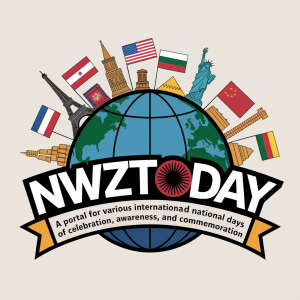The International Day against Nuclear Tests, observed every year on August 29, serves as a solemn reminder of the devastating impact of nuclear testing on humanity and our planet. Declared by the United Nations General Assembly in 2009, this day is a call to action for governments, organizations, and individuals worldwide to stand against nuclear testing and advocate for a safer, nuclear-free world.
Why August 29?
The date, August 29, was chosen to commemorate the closure of the Semipalatinsk Nuclear Test Site in Kazakhstan in 1991. This site was one of the most infamous nuclear test locations in the world, where hundreds of tests were conducted over decades, leaving a legacy of environmental destruction and human suffering. By marking this day, we honor the resilience of communities affected by nuclear tests and reaffirm our commitment to preventing such tragedies in the future.
The History Behind the Day
The International Day against Nuclear Tests was established by the United Nations in December 2009, following a resolution initiated by the Republic of Kazakhstan. The resolution emphasized the catastrophic effects of nuclear weapons testing and called for global efforts to promote peace and security. Since then, this day has become a platform for raising awareness, fostering dialogue, and advocating for the complete prohibition of all nuclear tests through instruments like the Comprehensive Nuclear-Test-Ban Treaty (CTBT).
Why Is This Day Significant?
Nuclear tests have caused immeasurable harm to our planet and its inhabitants. From radiation exposure leading to long-term health issues to irreversible damage to ecosystems, the consequences of nuclear weapons testing are far-reaching. The International Day against Nuclear Tests is a crucial reminder of our shared responsibility to protect future generations from the horrors of nuclear experimentation. It also highlights the importance of international cooperation in achieving a world free from nuclear weapons.
How Is the Day Observed?
Across the globe, this day is marked by educational events, conferences, and campaigns aimed at promoting the message of nuclear disarmament. Many countries and organizations host exhibitions, film screenings, and discussions to shed light on the impact of nuclear testing. Schools and universities often organize special lessons or activities to educate young minds about the dangers of nuclear weapons and the importance of peacebuilding.
Fun Facts about Nuclear Tests
- The first-ever nuclear test, code-named “Trinity,” was conducted by the United States on July 16, 1945, in New Mexico.
- Over 2,000 nuclear tests were carried out globally between 1945 and 1996.
- Kazakhstan’s Semipalatinsk Test Site, also known as “The Polygon,” witnessed nearly 500 nuclear explosions.
- The Comprehensive Nuclear-Test-Ban Treaty (CTBT) has been signed by 185 countries, but it is yet to be ratified by key nations like the United States, China, and India.
What Can You Do?
As individuals, we can play a significant role in advocating for a nuclear-free world. Here are some simple yet impactful ways to contribute:
- Educate yourself about the dangers of nuclear weapons and share your knowledge with others.
- Support organizations working towards nuclear disarmament.
- Participate in events and discussions on the International Day against Nuclear Tests.
- Use social media to spread awareness and amplify the call for a safer world.
Let us all take a moment on August 29, 2025, to reflect on the lessons of the past and pledge to work towards a future where peace and safety prevail. Together, we can make a difference—one step at a time!









